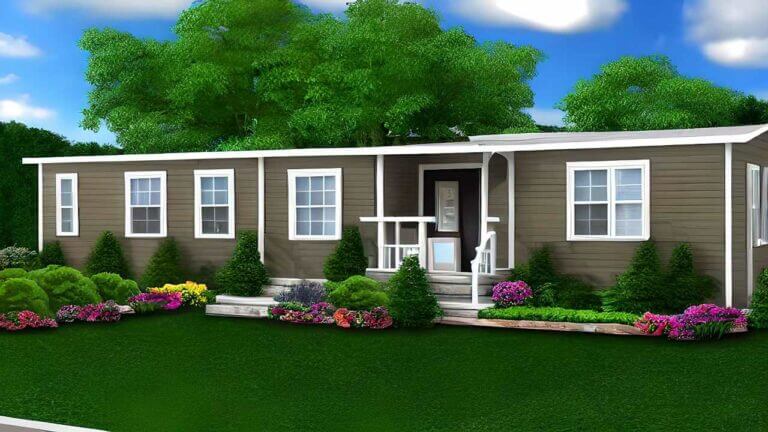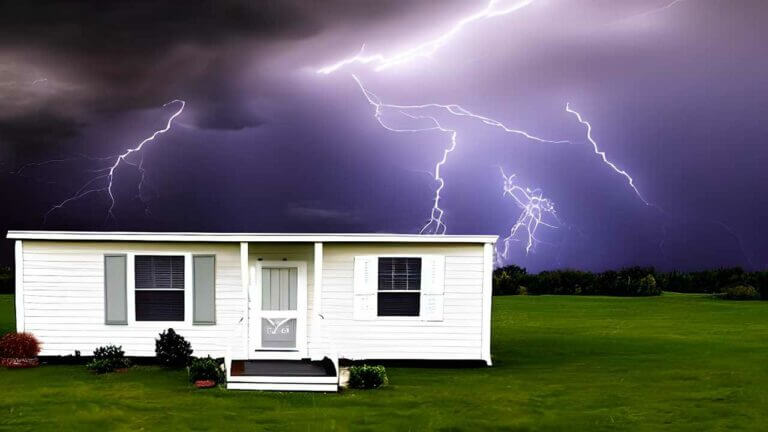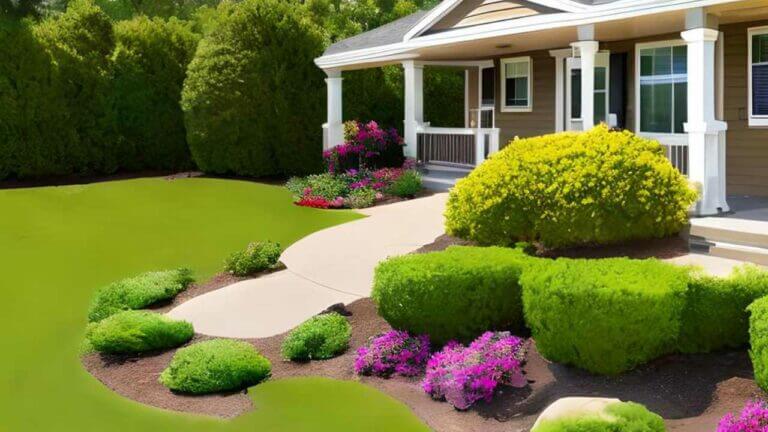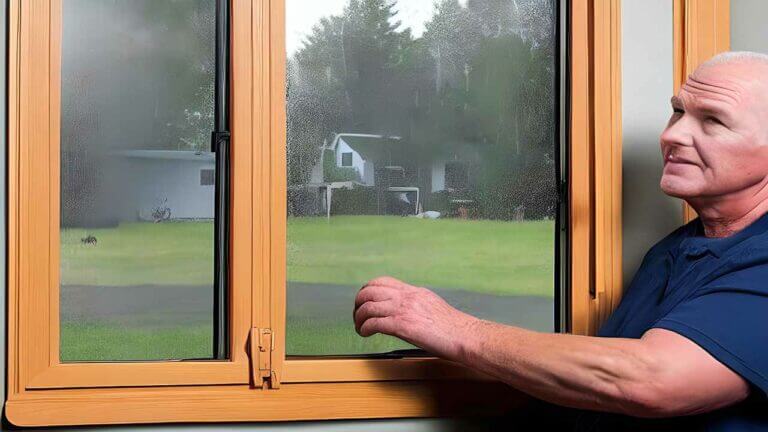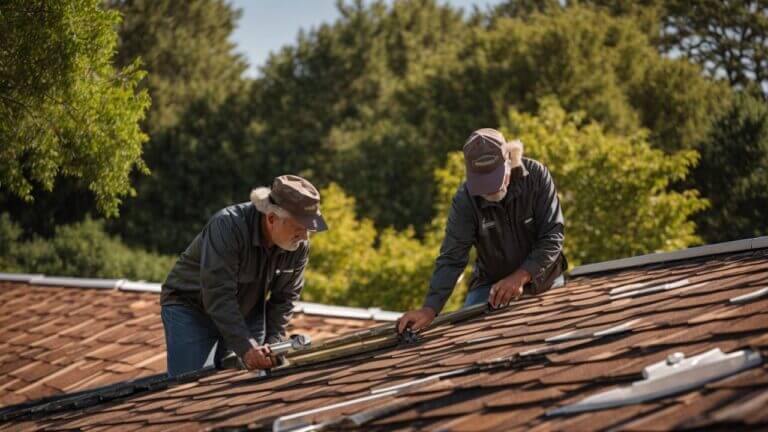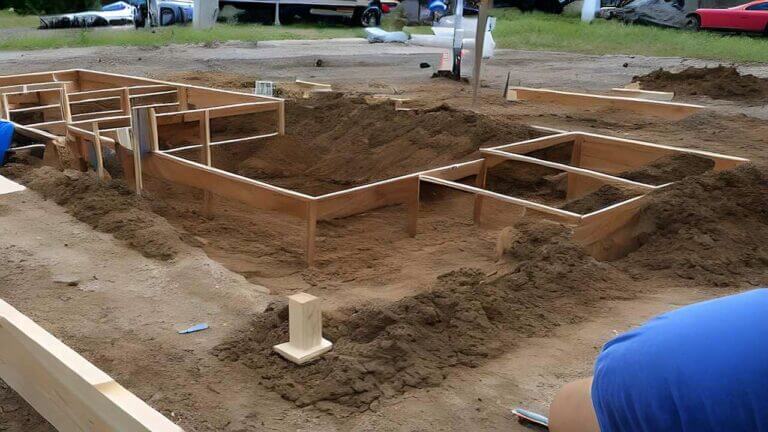Manufactured vs. Modular | The Modern Landscape of Home Building
The concept of “home” has evolved significantly over the years, and with it, the methods of construction. Today, we are witnessing an innovative era of home building, where speed, efficiency, and cost-effectiveness have become as important as bricks and mortar once were.
Understanding Manufactured and Modular Homes
Two key players in this contemporary domain are manufactured and modular homes, each with its distinct approach and audience. But what exactly are they, and how do they differ?
Manufactured homes, once commonly known as mobile homes, are built entirely in factory settings under federal HUD code. Even that comparison isn’t fair, as you’ll see in our post about the death of mobile homes.
They’re designed for affordability and flexibility, constructed on a permanent steel chassis, and transported to their resting place in sections or as a single entity.
While traditionally seen as movable, many manufactured homes today are securely anchored, blurring the lines between temporary and permanent housing solutions.
On the other side of the spectrum, modular homes are constructed in sections within a controlled factory environment, adhering to local building codes. They’re then transported to their permanent location, where they are assembled on a foundation.
To the untrained eye, these homes are indistinguishable from conventional site-built homes, offering the same aesthetics and solidity.
In the following sections, we’ll dive deeper into the fabric of each type, unwrapping the layers of construction, durability, and design that set them apart.
We’ll explore the financial implications of choosing one over the other and shed light on the regulatory tapestry that governs them. If you’re considering a path less trodden in the realm of homeownership, this guide will equip you with the knowledge to make an informed decision.
The Blueprint of Affordability: Manufactured Home Construction
Manufactured homes are marvels of efficiency, born on the assembly line and tailored for cost-conscious homebuyers.
These homes begin their journey to homeownership on the factory floor, adhering strictly to the federal HUD code, which ensures a consistent quality and safety standard nationwide.
The Journey from Factory Floor to Foundation
Each home is engineered on a sturdy steel chassis, designed to ensure a safe journey to its final destination. As we dissect their anatomy, we find that they are constructed to be robust yet remain inherently movable.
This is a unique aspect of manufactured homes—they are born with wheels, so to speak. They can be transported in sections or as a complete unit, ready to be placed on a plot of land that awaits its heartbeat.
And while these homes are often associated with transience, the modern era has seen a shift.
More and more, manufactured homes are being anchored into permanency, with additions and modifications that transform them from a temporary shelter into a lifelong sanctuary.
The notion that these homes are merely stopgaps is outdated. Today, they represent a pragmatic choice for those seeking the American dream without the traditional strings attached.
They challenge the conventional, flaunting mobility while offering the possibility of permanence. For some, they are a first step on the property ladder; for others, they are the final rung.
Let’s drill into the nuts and bolts of these unique dwellings and uncover the ingenuity behind their creation.
Engineering Precision: Modular Home Construction
Modular homes are the embodiment of precision engineering and modern construction. Built in dedicated facilities, each section of a modular home is crafted to meet or exceed the local building codes that apply to its final address.
Crafting Homes Piece by Piece
This isn’t just construction; it’s a fine-tuned assembly process where design meets functionality, piece by precise piece. In these climate-controlled environments, weather delays are a tale of the past, and efficiency is the prevailing wind.
The building materials used are the same as those in traditional “stick-built” homes, but the controlled conditions ensure that there is no compromise on quality.
Once the sections are complete, they embark on a journey to their resting ground, where they are seamlessly pieced together on a sturdy foundation.
Unlike their manufactured counterparts, modular homes are never meant to move again. They are permanent fixtures that blend into the fabric of neighborhood life, often indistinguishable from site-built homes.
This permanence brings a sense of security and solidity that is highly prized in the real estate market. The modular home construction process is a dance of detail and design, resulting in homes that stand strong against the caprices of weather and time.
They are proof that the future of home building isn’t just faster and smarter, but also built to last.
As we explore the intricate process of their creation, we find a harmonious balance between the efficiency of modern manufacturing and the enduring quality of traditional home building.
The Fabric of Longevity: Quality and Durability
When the winds of change blow, some build walls, while others build windmills. In the realm of home construction, the durability and quality of your abode determine whether you weather the storm or witness the windmill’s rotation.
Modular homes, with their standard construction materials and methodologies, stand tall, designed to withstand severe weather events including high winds. Their robustness is akin to that of site-built homes, and for good reason—they are constructed with the same care, precision, and materials.
Manufactured homes, on the other hand, have traditionally used lighter materials and a different construction approach. This distinction is not just about the weight of the materials but their ability to stand firm when nature tests their mettle.
While they are designed to federal HUD standards ensuring safety, the lighter construction means they might not have the same resilience as modular homes in the face of nature’s full force.
Yet, it’s important to recognize the strides in innovation and quality improvements in the manufactured home industry. Today’s manufactured homes are not the spitting image of their predecessors; they have grown stronger, more durable, and better equipped to protect their inhabitants.
We’re not just comparing apples to oranges; we’re contrasting the old with the new, the traditional with the progressive.
In the next sections, we’ll examine the financial implications and the customization possibilities that come hand-in-hand with these two distinct paths to homeownership.
The Financial Equation: Appreciation and Financing
Navigating the financial landscape of home ownership is akin to planting a garden. You must understand what will take root and grow in value, versus what may wither over time.
Modular homes, much like traditional houses, are planted firmly in the soil of appreciation. Their value grows over time, building equity and wealth for their owners.
The financial instruments available, such as traditional mortgages, acknowledge this upward trajectory of worth, offering buyers a familiar path to financing their home.
In contrast, manufactured homes have had a different financial tale to tell. Historically, they have been seen as depreciating assets, much like vehicles, which lose value the moment they leave the lot.
This perception has impacted not only the resale value of these homes but also the variety and terms of financing options available to prospective buyers. The market has often viewed them as a higher risk, leading to more stringent borrowing terms or higher interest rates, reflecting the expected depreciation.
However, let’s not overlook the shifting sands of time and progress. The lines are blurring as new financing options emerge, challenging the old views of manufactured homes and recognizing their potential as a long-term housing solution.
The market is slowly waking up to the reality that a home, regardless of its origin, is where value is cultivated—both in its walls and in the lives of those it shelters.
As we turn the page to the next chapter, we’ll consider the creative canvas of customization options for both modular and manufactured homes. We’ll see how the ability to tailor your living space can impact not just your lifestyle but also the long-term value of your investment.
Tailoring Your Space: Customization Options
Customization is the soul of a home. It is the process of infusing your space with your personality, your dreams, and your needs. Modular homes offer a canvas as broad as any traditional home.
You can choose the layout, the finishes, and the small details that turn a house into a home reflective of who you are. This flexibility is not just about aesthetics; it’s about creating a living space that adapts to your life, evolving as you do, room by room, tile by tile.
In the universe of manufactured homes, the options were once limited, akin to choosing between predetermined paths. But today, we’re seeing a renaissance.
Options for customization are expanding, allowing homeowners to influence floor plans and finishes, though within a more fixed menu of choices. It’s a step towards personalization, offering a taste of customization that can make a manufactured home feel just as personal, albeit within certain boundaries.
As we stitch together our homes, whether modular or manufactured, we are not just constructing walls; we’re building our futures, our sanctuaries, and our legacies.
In the next section, we’ll navigate the regulatory pathways of permits and zoning, a crucial step in the journey of home construction and ownership. It’s a landscape that can be as complex as the construction process itself, but understanding it is key to realizing your home-building dreams.
Navigating the Red Tape: Permits and Zoning
The journey to building a home is not just about the construction—it’s about navigating the labyrinth of permits and zoning regulations. Modular homes, in their essence, align with conventional housing in the eyes of the law.
They are permitted as any site-built home would be, allowing them to rise in a variety of neighborhoods, from the quiet suburban to the bustling cityscape. They fit within the community tapestry, adhering to the same regulations that govern the traditional homes around them.
Manufactured homes, however, often encounter a different set of challenges. Zoning restrictions can be a thorny thicket, with many areas imposing limitations that can affect where these homes can be placed.
It’s a hurdle that requires foresight and understanding, as the regulations can vary significantly from one jurisdiction to another. For potential homeowners, this means doing the groundwork, understanding the zoning laws, and sometimes engaging in the arduous task of seeking variances.
Building Your Dream Within the Lines
The importance of due diligence cannot be overstated in this process. While it may seem daunting, navigating these regulatory pathways is crucial to bringing your dream home to life, whether it be modular or manufactured.
Knowing the lay of the land can save you from future heartaches and ensure that your home stands not only in compliance but in harmony with its surroundings.
Crafting a Home for Tomorrow
Wrapping up our guide, the paths to a home are many, but the destination is the same—a place to call your own. Modular homes stand as a testament to the evolution of traditional building, offering permanence, customization, and a growing place in the real estate market.
Manufactured homes, while they face hurdles like depreciation and zoning restrictions, remain a vital option for those seeking affordability and flexibility. Both have their place in the landscape of American housing, each offering a different blueprint for living.
As we close the chapter on this exploration, remember that whether your home comes in pieces or on wheels, its true worth is defined by the life you build within its walls.
The choice between modular and manufactured homes isn’t just a financial or aesthetic one; it’s about choosing the right foundation for your future. So, consider carefully, plan wisely, and build not just for today, but for all the tomorrows to come.


